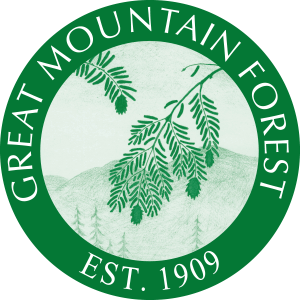
PREVIOUS WEATHER REPORTS
February 2019
Wintertime, More or Less
By Russell Russ
You cannot judge a complete month’s weather by looking at just a few days. The first few days of February were quite cold with below zero temperatures. A few days later, temperatures were in the mid-fifties. So, what was the rest of the month like? The answer is mostly average for February. All local ponds and lakes stayed ice covered. Snow depth at the weather station ranged from 7 inches down to just a trace then back up to 7 inches. Last year, springtime strongly inserted itself during February resulting in the third warmest February on record. Not the case this year. February is still more or less a wintertime month here in Norfolk.
The month’s low temperature of minus 5 degrees was observed on February 1. The high temperature of 57 degrees was observed on February 4. The February 4 high of 57 degrees was a record high for that date, beating the old record of 54 from 1991. The average monthly mean temperature was 24.2 degrees, 2.1 degrees above normal. This is above average, but not far from normal. The warmest February on record was in 2002 with 30.7 degrees. The coldest was in 1934 with 9.0 degrees, making that also the coldest month of any month as recorded at this weather station over the last 88 years. Norfolk’s coldest month occurred many years ago, but cold months can still happen in this day and age. The second coldest month of any month was observed in February 2015 with a monthly average temperature of 10.9 degrees.
Total precipitation recorded for the month was 3.10 inches, 0.54 inch below normal. The 2019 calendar year, January and February, total precipitation amount of 9.08 inches is 1.42 inches above normal. Monthly total precipitation amounts in Norfolk are evenly distributed throughout the year, with average monthly amounts ranging from 3.64 inches to 4.87 inches. February happens to be the month with, on average, the least amount of precipitation here in Norfolk.
February’s monthly snowfall total of 11.3 inches was 9.2 inches below normal. Norfolk and much of southern New England are not seeing an abundance of snowfall this winter. As has been the case for a good part of this winter, Norfolk is getting its fair share of wintery precipitation. There has been some snow, but many times it has been preceded or followed by sleet, freezing rain and/or rain. Northern New England and northern New York State have seen less mixing of precipitation and these areas have recorded much more snowfall than Norfolk this winter.
The 2019 calendar year snowfall total through February is 26.7 inches. This is 14.6 inches below normal. It is also exactly 10 inches less than Norfolk’s calendar year snowfall total at this time last year. The snowfall total for this winter season, October through February, is 44.0 inches. This is 21.7 inches below normal. Norfolk could be flirting with a high ranking low snowfall winter, but March and April are still to come and both can produce some decent snowfall totals.
A look ahead into March through mid-month shows that wintertime continues to hold on, and in much the same way it has been all winter long, with a variety of cold and warm and rain and snow. Most lakes and ponds were still ice covered, higher elevations and forested areas in town were holding on to at least some snow and temperatures were on average cold for March. March’s monthly temperature was running nearly 5 degrees below normal. Both total precipitation and snowfall were well below normal. March weather can be wild around here, but so far this year it has been fairly tame. Tame, but definitely on the colder side.
January 2019-Part 2
Above Normal Precipitation Continues
By Russell Russ
The year of 2018 was Norfolk’s 7th wettest year since 1932. It was also Norfolk’s 11th warmest year. Overall, the first month of 2019 picked up right where 2018 left off, it was wetter than normal and a little warmer than normal. January was not a monster winter weather month by any means, but for the most part it did have that winter look and feel to it. It even came with a brief January thaw.
January’s average mean temperature of 21.7 degrees was just 0.9 degree above normal. Norfolk’s warmest January on record was in 2002 with an average temperature of 31.7 degrees and the coldest was in 1982 with 11.7 degrees. January’s low temperature of minus 12 degrees was observed on two dates, January 21 and 31. The minus 12 on January 21 was a new record low for that date, beating the minus 11 set back in 1961. The month’s high temperature of 53 degrees was observed on January 24 and it was a record high for that date, beating the old high of 52 set in 1938. These record low and high temperatures are not all that unusual for January, what was unusual was the fact that they occurred only 78 hours apart. That is a temperature swing of 65 degrees from a Monday morning to a Thursday afternoon – in January.
January’s total precipitation of 5.98 inches was 1.96 inches above normal. Not that impressive, but it was Norfolk’s 11th wettest January over the last 88 years and it was Norfolk’s 8th consecutive month with above normal precipitation. The wettest January was in 1979 with 11.77 inches and the driest was in 1970 with just 0.74 inches.
The monthly snowfall total of 15.4 inches was 5.4 inches below normal. The snowiest January was in 1987 with 50.5 inches and the least snowy was in 1980 with just 2.6 inches. The 2018-2019 winter season, October through January, snowfall amount of 32.7 inches is 12.5 inches below normal, it is also 3.9 inches below where we were at last year through January. It has not been a very snowy winter to date, much to the dismay of skiers and television weather personalities, but there has been snow in Norfolk this winter. Strangely enough, the largest snowstorm so far this winter came in mid-November with a total snowfall of 8.5 inches.
A look at February’s weather through mid-month shows that wild swings in temperature continue to be a story for this winter. Early February’s big temperature swing was a reading of minus 9 on February 1 to a record high of 57 on February 4. With all of the ups and downs considered, through mid-month, temperatures were running about 3 degrees above normal. Total precipitation and snowfall were about normal. Perhaps not in all locations, but at the weather station and in higher elevations there was snow on the ground ranging from just a trace to 7 inches every day through mid-month. Winter is here, it is not making a strong showing so far this year, but it is here. Snow lovers and television weather personalities should not give up hope just yet, March and even April in Norfolk can be snowy.
January 2019-Part 1
An early look at January 2019 weather
By Russell Russ
A complete summary of January’s weather will be coming soon. An early look at the month shows the average monthly mean temperature was 21.7 degrees. This was 0.9 degree above normal. There were some wild swings in temperatures during the month. Record warmth and record cold. There were five days that had subzero temperatures. Total precipitation was 5.98 inches, 1.96 inches above normal. January’s snowfall total was 15.4 inches, 5.4 inches below normal.
Weather data from 2018 has been summarized and notable weather facts and figures have been compared to the 87 year weather data history for this weather station. The year of 2018 had numerous high ranking positions for temperature, precipitation and snow – but mostly for temperatures.
See the “Past Narratives” section of this website for a November, December and yearly summary for 2018 weather. Weather records up through 2018 have also been recalculated and revised data sheets have been posted in the “Weather Data Sheets” section.
Stay tuned for future weather updates.

GET IN TOUCH!
860 824-8188



